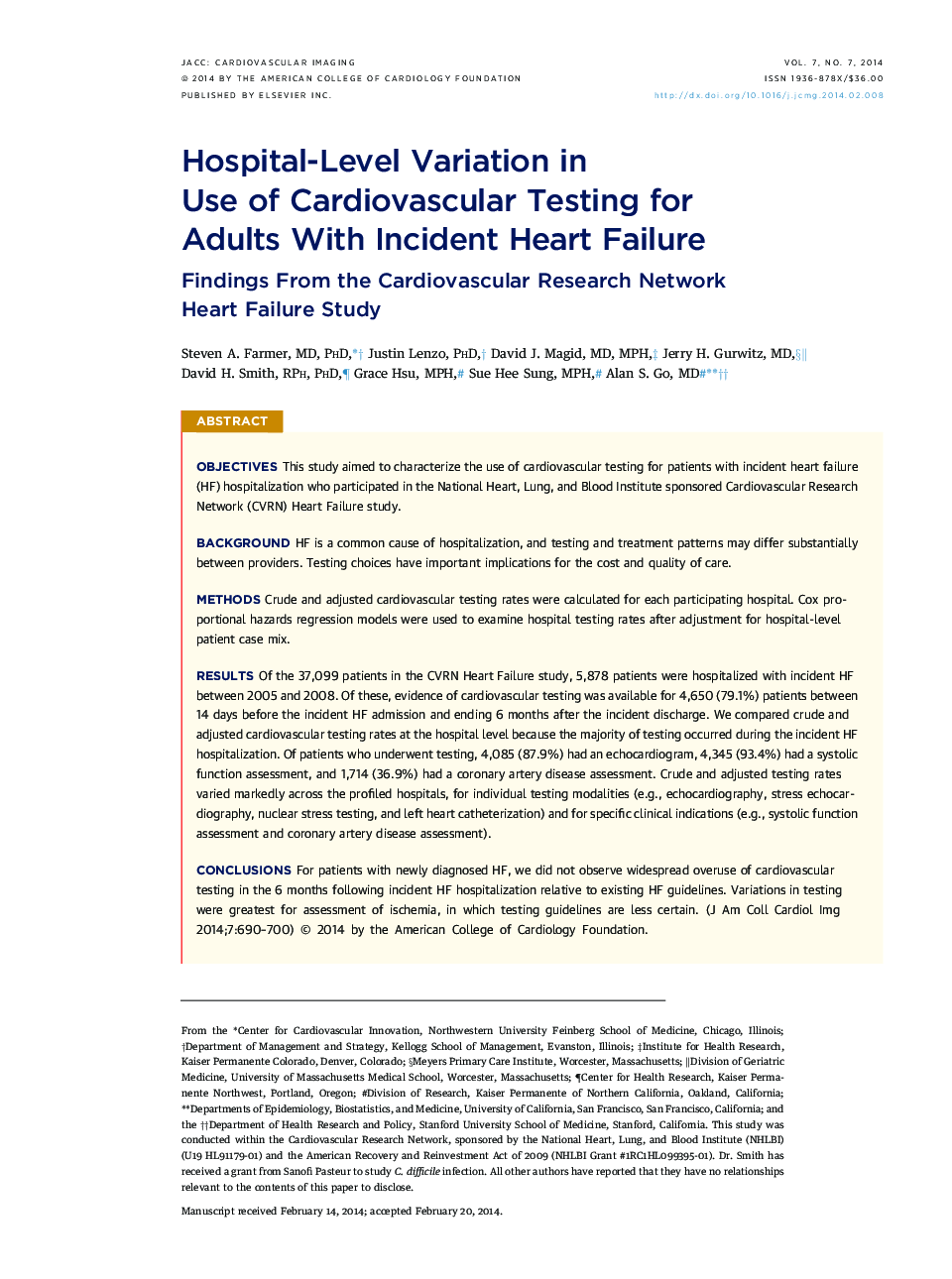| Article ID | Journal | Published Year | Pages | File Type |
|---|---|---|---|---|
| 2937978 | JACC: Cardiovascular Imaging | 2014 | 11 Pages |
ObjectivesThis study aimed to characterize the use of cardiovascular testing for patients with incident heart failure (HF) hospitalization who participated in the National Heart, Lung, and Blood Institute sponsored Cardiovascular Research Network (CVRN) Heart Failure study.BackgroundHF is a common cause of hospitalization, and testing and treatment patterns may differ substantially between providers. Testing choices have important implications for the cost and quality of care.MethodsCrude and adjusted cardiovascular testing rates were calculated for each participating hospital. Cox proportional hazards regression models were used to examine hospital testing rates after adjustment for hospital-level patient case mix.ResultsOf the 37,099 patients in the CVRN Heart Failure study, 5,878 patients were hospitalized with incident HF between 2005 and 2008. Of these, evidence of cardiovascular testing was available for 4,650 (79.1%) patients between 14 days before the incident HF admission and ending 6 months after the incident discharge. We compared crude and adjusted cardiovascular testing rates at the hospital level because the majority of testing occurred during the incident HF hospitalization. Of patients who underwent testing, 4,085 (87.9%) had an echocardiogram, 4,345 (93.4%) had a systolic function assessment, and 1,714 (36.9%) had a coronary artery disease assessment. Crude and adjusted testing rates varied markedly across the profiled hospitals, for individual testing modalities (e.g., echocardiography, stress echocardiography, nuclear stress testing, and left heart catheterization) and for specific clinical indications (e.g., systolic function assessment and coronary artery disease assessment).ConclusionsFor patients with newly diagnosed HF, we did not observe widespread overuse of cardiovascular testing in the 6 months following incident HF hospitalization relative to existing HF guidelines. Variations in testing were greatest for assessment of ischemia, in which testing guidelines are less certain.
